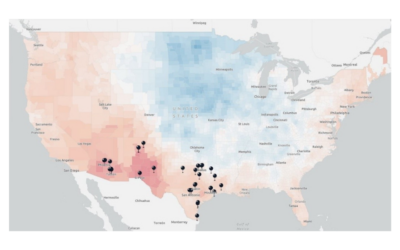By Hari Kunduru
An outside observer might assume that zoos compete with other zoos. In reality, your organization’s main competition is not other zoos, but other local attractions like museums, botanical gardens, landmarks, and sporting events. At Zoo Advisors, we’ve ramped up our business intelligence efforts to understand how modern market conditions are affecting zoological visitors in comparison to other local attractions.
We were curious about the following:
- How do top-line visitor attendance and trade areas of zoos compare to other local attractions such as aquariums, museums, and botanical gardens?
- How do the volume and percentage of loyal visitors for each type of attraction in both urban and suburban communities compare?
- How do the spending patterns of visitors to these organizations compare?
Three findings stood out:
1) Visitors to museums and botanical gardens have a higher household income, but lower household count.
On analyzing visitor data, we found that the majority of visitors to museums and botanical gardens have a 7.4% higher spending power than zoo visitors, but also have relatively (two) fewer people living in their households. This means the visitors of other attractions may be individuals or partners that don’t have children. Terminology regarding higher or lower was determined using standard deviations. Household count was determined using the 2019 Census, is a whole number, and reflexive.
How can you take this information and use it at your zoo? Focus on your strengths by catering to children, but also introduce more ‘adult-focused’ events such as a Beer Tour or Zoo Night Lights to appeal to different audiences.
2) People visit the zoo more often and are more loyal when compared to other attractions.
There is a special niche of people out there that is the ideal zoo visitor. These people typically have the following characteristics:
- Household size/income: >4 & >80k/year
- Ethnicity: White
- Spending patterns: Moderate
- Gender: Female
- Length of stay: >4.33 hours
- Transportation methods: Personal
When we examine this same group of people and analyze how they visit other attractions, we find that they are not as loyal. But what is loyalty? We defined loyalty as visitors who have two or more repeat visits within a year. We can infer from this that a visit to a zoo may be a more repeatable experience when compared to a local botanical garden or museum.
Given this data, we recommend creating ‘pathways’ for your zoo — a first-time route for beginners to view major exhibits while more experienced visitors may wish to dive deeper into niche exhibits.
3) People who frequently visit a zoo are also repeat visitors at other local attractions.
We found that people who we characterized as repeat visitors to a zoo (e.g., constituents who visit two or more time per year) were also repeat visitors to other local attractions. The demographics of this group are a bit different than what you’d expect, typically being older, wealthier people with an average household income of 75-100k.
How can you use this information?
- Collaborate with other local attractions, creating cross-organizational memberships to incentivize people to visit all the local attractions in your community.
- Areas near competing local attractions are a good place to target marketing efforts or run location-based social media ads.
- Organize special events around the same time as competing organizations to leverage the buzz.
So how did we calculate these findings?
- First, we divided the nation into three regions: East, Midwest, and Western.
- Next, we analyzed 15 zoos in both urban and suburban environments.
- Then, we picked out a total of 43 local attractions near the selected zoos.
- Finally, we analyzed visitor data from 2018 and 2022, processing the datasets through artificial intelligence and regressions tests to identify trends.
Interested in learning how we can provide localized insights for your zoo? Drop us a line to let us know! Stay tuned for another data insights article next week, utilizing Zoo Advisors’ Audience Analytics service. And if you missed the first two articles in the series, click on the titles to read:





